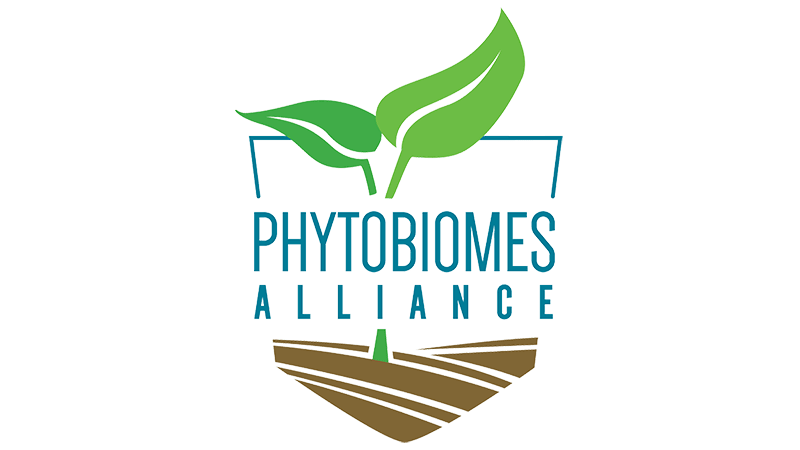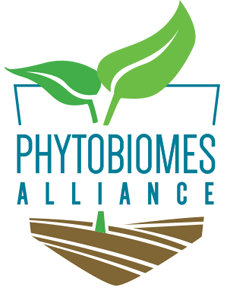
Seed microbiome may hold uncommon ability to benefit next generation of plants
Source: Michigan State University press release
Project supported by the Phytobiomes Alliance, co-lead by Coordinating Committee member Matthieu Barret, leader for the Alliance activities on seed microbiome.
EAST LANSING, MI, US
Sometimes scientists follow a hunch.
At the conclusion of a pilot study for Michigan State University’s Plant Resilience Institute (PRI), microbial ecologist Ashley Shade had a hunch that started a chain reaction of exciting interdisciplinary and international collaboration and landed Shade and her team a three-year, $750,000 USDA National Institute of Food and Agriculture (NIFA) grant to investigate the seed microbiome of the common bean.
“I ran a pilot project to look at the microbiome associated with the roots of the common bean during stress, but the plant set seeds during the study,” explained Shade, an assistant professor in the Department of Microbiology and Molecular Genetics in the MSU College of Natural Science (NatSci) and PRI faculty member. “So I thought, why not? Let’s look at the seed microbiome, too, and what we saw was something really interesting: it looked like stress contributed to an alteration of the microbiome in the seed.”
Shade took the pilot data results to PRI’s bi-weekly brown bag seminar where colleagues expanded her hypothesis further, suggesting changes in the seed microbiome might also be caused by plant epigenetic changes in gene regulation.
With this valuable insight in hand, Shade reached out to MSU plant biologist Chad Niederhuth for epigenetic depth, as well as Matthieu Barret, a research scientist at the French National Institute for Agricultural Research (INRA), Europe’s leading agricultural research institute, that Shade met at an international conference.
“I reached out to Matthieu because he has an expertise in seed pathogen transfer, and since I had never considered plant epigenetics before, we needed Chad’s expertise to parse out the influence of epigenetics on the microbiome under stress,” Shade said. “With our powers combined, we decided to go ahead with the grant proposal.”
With her stellar team assembled, Shade was poised to write a research narrative based on her hunch: that the seed microbiome directly effects the next generation of plant. Her hunch was rewarded.
This summer, with grant in hand, the team will embark on the exploration of the microbiome of Phaseolus vulgaris, or common bean, an important crop for food security in developing nations and for sustainable agriculture in the United States and around the world.
“There are so many questions,” said Shade, who is principal investigator on the grant and recently published a review about the lack of knowledge regarding seed microbiota in the scientific journal Current Opinion in Microbiology, along with Barret and Marie-Agnes Jacques from the INRA. “We know that there are beneficial and pathogenic microbes that can be passed from generation to generation via the seed, but compared to other parts of the plant and its associated microbiome, we know very little about it.”
Investigating how plants alter their seed microbiome under stress will allow Shade and her team to test several hypotheses. Does it matter if the seed microbiome is altered during stress? Will the alteration provide the next generation of plants with microbes that help it respond to stress in a positive way, with more resilience, or will it be detrimental to the plant, especially if the next generation is not exposed to the same stress?
“These are the questions we hope to address based on that really exciting, original pilot data,” Shade said.
“Frankly, I was surprised and impressed by the data Ashley had demonstrating microbiome inheritance,” said Niederhuth, an assistant professor with joint appointments in the MSU NatSci Department of Plant Biology and BioMolecular Science. “When she asked if I had any interest in getting at what factors contribute to this, I was happy to join the project.”
Niederhuth studies the plant epigenome, which consists of various factors that help regulate the structure of the genome and determines which genes get turned on or off. Using novel methods such as bisulfite sequencing and chemical inhibitors, Niederhuth designed what Shade described as a very elegant study to measure changes to the common bean epigenome and manipulate its components.
“Whenever you have a complex set of interactions like there is in this study, it can be tough to dissect the role of any one component,” Niederhuth said. “So in helping to plan this project, my goal was to design experiments that allow us to alter one of the components and see how it changes the whole. By combining these tools, we hope to determine if the epigenome contributes in any way to the inheritance of the microbiome.”
A seed microbiome includes the community of bacteria, archaea and fungi found on both the surface and the inner parts of the seed. To study this community, the team will focus on the inner-seed microbiome, surface sterilizing the seed and soaking it to extract the microbial DNA for high-throughput DNA sequencing techniques.
Barret, an expert in seed microbiota who has been investigating seed transmission of microbial assemblages for the last five years, will be conducting parallel experiments at the Research Institute of Horticulture and Seeds in Angers, France. By comparing plants from bean fields with different legacies and from different parts of the world, the researchers will be able to see if alterations in the microbiome are consistent across two different management conditions.
“The international aspect of the grant is crucial to help advance phytobiome science and its translation into sustainable crop production practices,” Barret explained. “Indeed, multi-site experiments are crucial to generate knowledge that is greater than just the sum of separate studies.”
If Shade’s team is able to pinpoint the seed’s beneficial microbes, they may be able to isolate them and add them back to seeds ready to plant in order to leave the next generation better off: more resilient to changes in climate and more able to handle drought and nutrient saturation.
“This could be really important because manipulating a microbiome in the field is hard,” Shade explained. “There are already techniques developed for biological seed treatments, so it is an interesting avenue to find isolates that are potentially beneficial.”
These translational possibilities to improve common bean’s resilience to climate change have Shade extremely excited for the future of sustainable agriculture.
“We definitely have our eye toward translational applications,” Shade said. “The overarching objective is to understand the implication of microbiome changes and identify members of the microbiome that we can isolate from the seed and add back to the plants to have some protective benefits. But there is a lot of work before that.”
From beginning to end, Shade’s hunch has produced a grant packed with potential for new discoveries about the seed microbiome and exciting translational opportunities for agriculture that will lead her diverse team down a completely new scientific path.
“For me, the most exciting part is that we are asking new questions about the role of the epigenome that haven’t been explored,” Niederhuth said. “We really don’t know what to expect, and those are the sorts of questions that really excite me.”
“The interdisciplinary aspect of the proposed project is very motivating,” Barret added. “It brings together expertise in epigenetics, plant-microbial interactions and community ecology.”
“I am excited to work on this project with graduate students, including a Fulbright Scholar who was involved with the preliminary data, and a new student this fall,” Shade said. “I am also thrilled to be working internationally and as part of a great, interdisciplinary team on this important question.”
